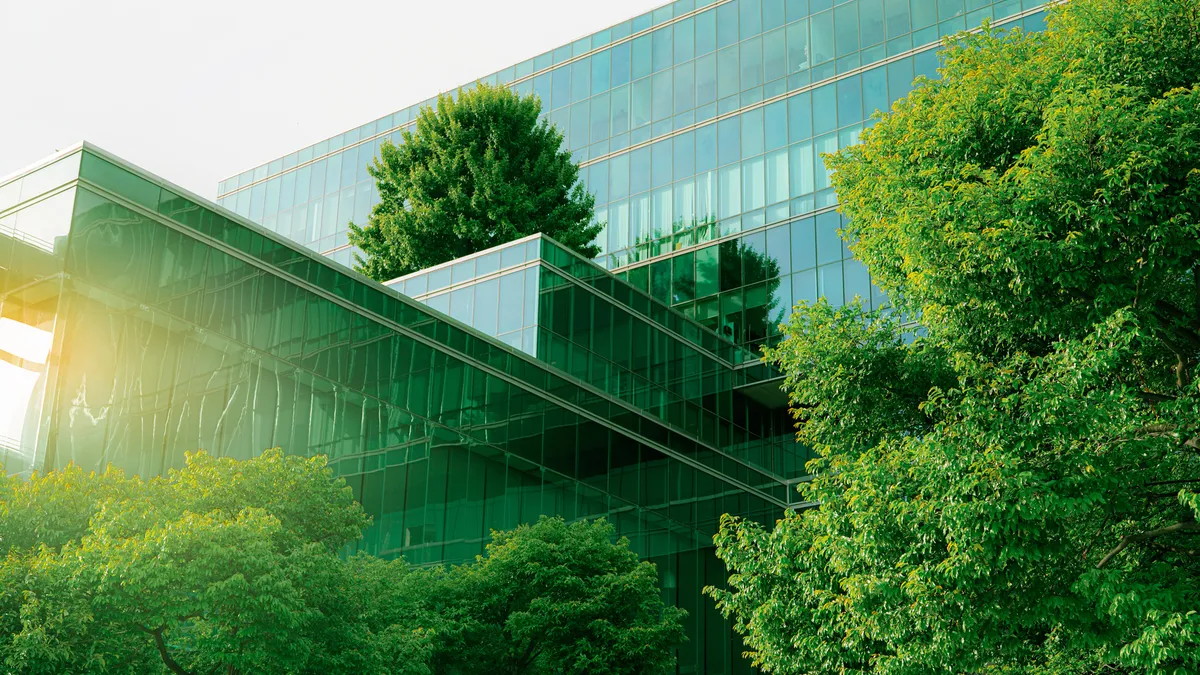Editor's Note: The following is a guest post from Tom Sieniewicz, Partner at NBBJ Design, AICP, AIA.
The City of Boston recently made headlines for an ambitious plan to mandate all new city-owned buildings to be carbon neutral, part of a wider plan for the city to achieve net zero status by 2050.
The attention on this announcement and the framing of net zero makes sense. Finally, there is a sustainability goal for the city that people could fully grasp and get behind, a readily understandable and appealing arithmetic proposition that the city's buildings will eventually produce as much energy as they use.
The challenge, of course, isn’t in getting people excited about the prospect of going net zero — fervor around the term has grown with the number of buildings that meet the standard. The challenge is preparing cities for what it's going to take to actually make net zero a realistic possibility.
An ambitious goal like Boston's requires a total overhaul in how we think about sustainability at every level of impact. The changes must go beyond recycling, using LED light bulbs, and even constructing net zero buildings, since individual buildings or projects can only go so far. Cities will have to embrace bigger, district-wide or neighborhood-scale solutions that create change at a scale that will make a difference.
The city already has a good model for what district energy looks like in practice with the Kendall Station power plant in Cambridge. For years, waste heat was dumped from the cooling processes of the plant's generating turbines into the Charles River basin. The resultant overheated river water produced large algae blooms, making the river waters toxic to not only wildlife but also humans who came in contact with the algae.
By virtue of a mutual agreement, today waste steam heat from the power plant is piped across the Charles River to Massachusetts General Hospital in Boston, where it is used for heating the campus in the winter and to sterilize equipment year-round. The proximity of a large hospital physical plant, which had the unusual need for steam 12 months of the year, to the power plant was a fortuitous urban condition and demonstrated the beauty of thinking about district-wide solutions for achieving net zero.
Examples like this demonstrate how we need to change the way we think and talk about sustainability. As an architect and city planner, I've seen time and time again how the way we communicate an idea is a powerful tool for helping people feel like they can tackle daunting problems. It's also true that rhetoric can have the opposite effect. Solutions at the scale of the city tend to be complex. They don't carry the catchy recognition of a well-marketed phrase like "net zero," but they do make it possible for net zero to be a feasible goal.
I learned this firsthand during my time on the Getting to Net Zero Task Force in Cambridge. In 2015, the Cambridge City Council approved the Net Zero Action Plan, a 25-year proposal that will get Cambridge to net zero by 2040 — the result isn't just talk but real policy, embodied in the city's net zero zoning.
To make this work, we understood that the definition of net zero needed to be expanded. Solutions come in myriad form, including accessing green energy from out of state. After all, creating a market for non-CO2-producing energy sources outside the boundaries of one’s own city helps the planet at large. In Cambridge these offsets absolutely count toward netting out a building’s carbon footprint. So daisy-chaining energy production in neighborhoods, and yes, designing homes and buildings with an eye to energy savings so it is ultimately easier to net out the energy use with clean production, need to be strategies too.
Approaching sustainability as a set of steps and achievable benchmarks can take away some of the daunting magnitude of the task at hand. In Cambridge, for instance, the city started by putting its money where its mouth is. The city is requiring all government buildings — firehouses, police stations and schools, for example — to be net zero by 2025. Next, we’ll tackle the biggest, most energy-sucking buildings, laboratories, with the goal of getting them to net zero by 2030.
The challenge is big, but it's not impossible. In Seattle, for example, Amazon's new downtown headquarters captures waste heat from a non-Amazon-owned data center on an adjacent block to reduce their own energy consumption. It's just one company, and an area of only a few blocks, but it’s an important proof-of-concept that points the way forward.
On an even larger scale, the United States Department of Energy has launched a Zero Energy Districts Accelerator program that is currently piloting projects in Denver; St. Paul, MN; Buffalo, NY; Huntington Beach, CA and Fresno, CA.
Designers and architects are well positioned to push net zero forward. The job is to imagine futures that don't exist today, to generate creative solutions that speak to all of the above-mentioned scales. District-wide solutions to energy prove that, if we work together, even more powerful and kaleidoscopic solutions are possible for our mind-boggling and seemingly impossible environmental challenges.
The solutions to climate change can be remarkably beautiful and may even lie in some pretty old-fashioned values, like building strong communities, relying on our neighbors and believing that design matters.

















